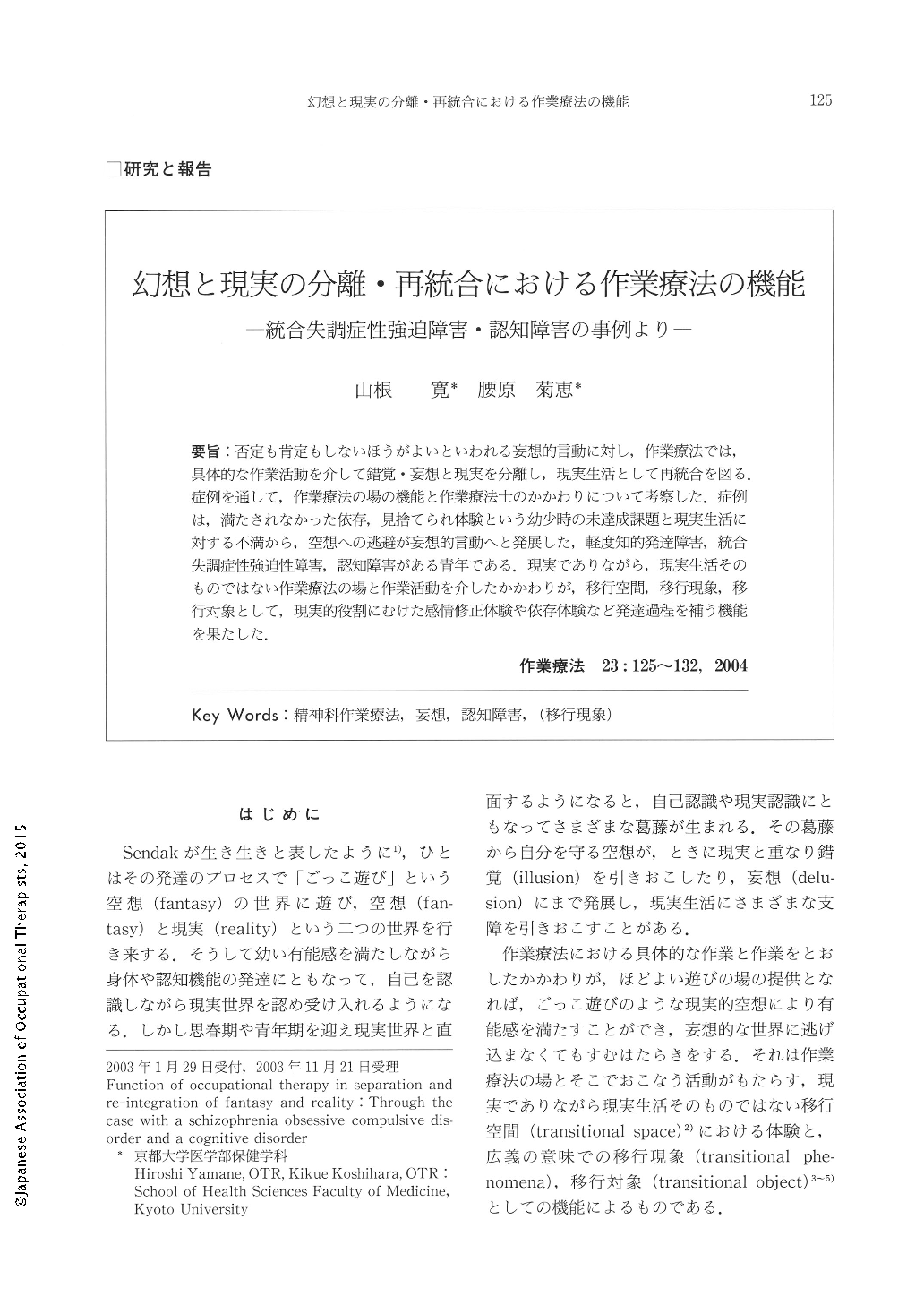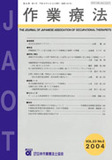Japanese
English
- 販売していません
- Abstract 文献概要
- 1ページ目 Look Inside
- 参考文献 Reference
要旨:否定も肯定もしないほうがよいといわれる妄想的言動に対し,作業療法では,具体的な作業活動を介して錯覚・妄想と現実を分離し,現実生活として再統合を図る.症例を通して,作業療法の場の機能と作業療法士のかかわりについて考察した.症例は,満たされなかった依存,見捨てられ体験という幼少時の未達成課題と現実生活に対する不満から,空想への逃避が妄想的言動へと発展した,軽度知的発達障害,統合失調症性強迫性障害,認知障害がある青年である.現実でありながら,現実生活そのものではない作業療法の場と作業活動を介したかかわりが,移行空間,移行現象,移行対象として,現実的役割にむけた感情修正体験や依存体験など発達過程を補う機能を果たした.
It is said that we should refuse to deny or confirm our patients' delusions. In occupational therapy, however, we make the effort to separate delusion and reality through concrete activities, thus integrating patients back into "real life" perceptions. As this case study evolved, we carefully considered the function of occupational therapy and the role of occupational therapists. The client is a patient with slight mental retardation, schizophrenic compulsive behavior, and a cognitive disorder. His fantasies developed into delusions due to a life of underachievement in his infancy and dissatisfaction with real life. An occupational therapy plan and therapeutic relations plan involved activities that functioned as supplements to the development process, which aided in the feelings correction experience and the dependence experience, thus creating a transitional space, transitional phenomena, and a transitional object.

Copyright © 2004, Japanese Association of Occupational Therapists. All rights reserved.


